
Roots
To stand on solid ground, to truly understand the protective embrace of textured hair against the sun’s persistent gaze, one must first listen to the whispers of ancient winds, tracing paths back to our ancestral homelands. This journey is not merely scientific; it is a spiritual excavation, a recognition of how heritage is woven into every curl, every coil. We are not simply speaking of strands; we speak of living archives, each helix a record of adaptation, survival, and deep wisdom. Our exploration of how textured hair’s natural architecture contributes to sun defense begins here, at the source, acknowledging the profound connection between biology and ancestry.
The very presence of highly textured hair on human heads, particularly those originating from regions with intense solar radiation, offers a compelling narrative of evolutionary brilliance. Long before sunscreens adorned our shelves, or even protective hats became commonplace, the human body possessed its own ingenious solutions. This natural design provided a shield, a living canopy, protecting the scalp and indeed the delicate organ beneath, the brain, from the sun’s relentless ultraviolet assault.
Ancestors living under the equatorial sun developed hair that stood proud, defying gravity, creating an insulating layer of air that offered both cooling and defense against heat gain (Jablonski & Chaplin, 2014). It is a testament to the endurance of our forebears and their profound connection to their environment.
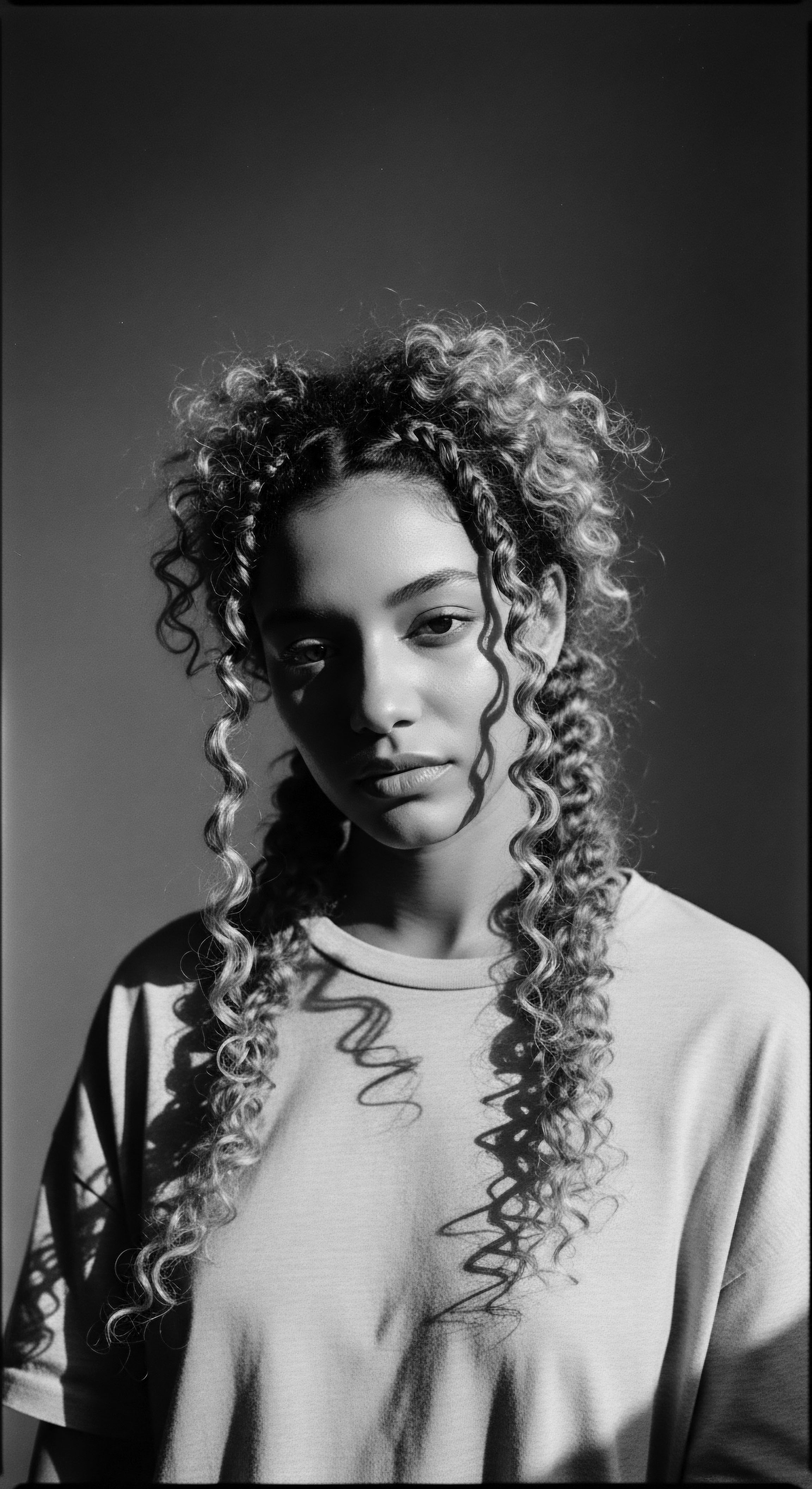
Hair’s Original Purpose Beyond Adornment
From the earliest human lineage, hair on the head served a critical role. It was not primarily for adornment or style, though it certainly became that. Its initial, pressing task was survival. When considering how textured hair’s natural architecture contributes to sun defense, we find ourselves at the nexus of evolutionary biology and human history.
Early hominids living in scorching, sun-drenched environments developed afro-textured hair as an adaptive measure. This unique hair type, characterized by its tightly spiraled structure, provided significant protection for the head against intense ultraviolet (UV) radiation from the sun.
The structure itself, with its dense appearance yet relatively sparse distribution of individual strands compared to other hair types, facilitates air circulation, allowing the scalp to breathe while still providing substantial coverage. It is a dual function, a testament to nature’s efficiency ❉ insulating against heat while simultaneously shielding from the direct, damaging rays. The hair, in essence, creates a micro-climate around the scalp, mitigating the thermal load and solar impact.
Textured hair’s coiled architecture creates an inherent air cushion, a ancestral shield against the sun’s intense heat and harmful rays.
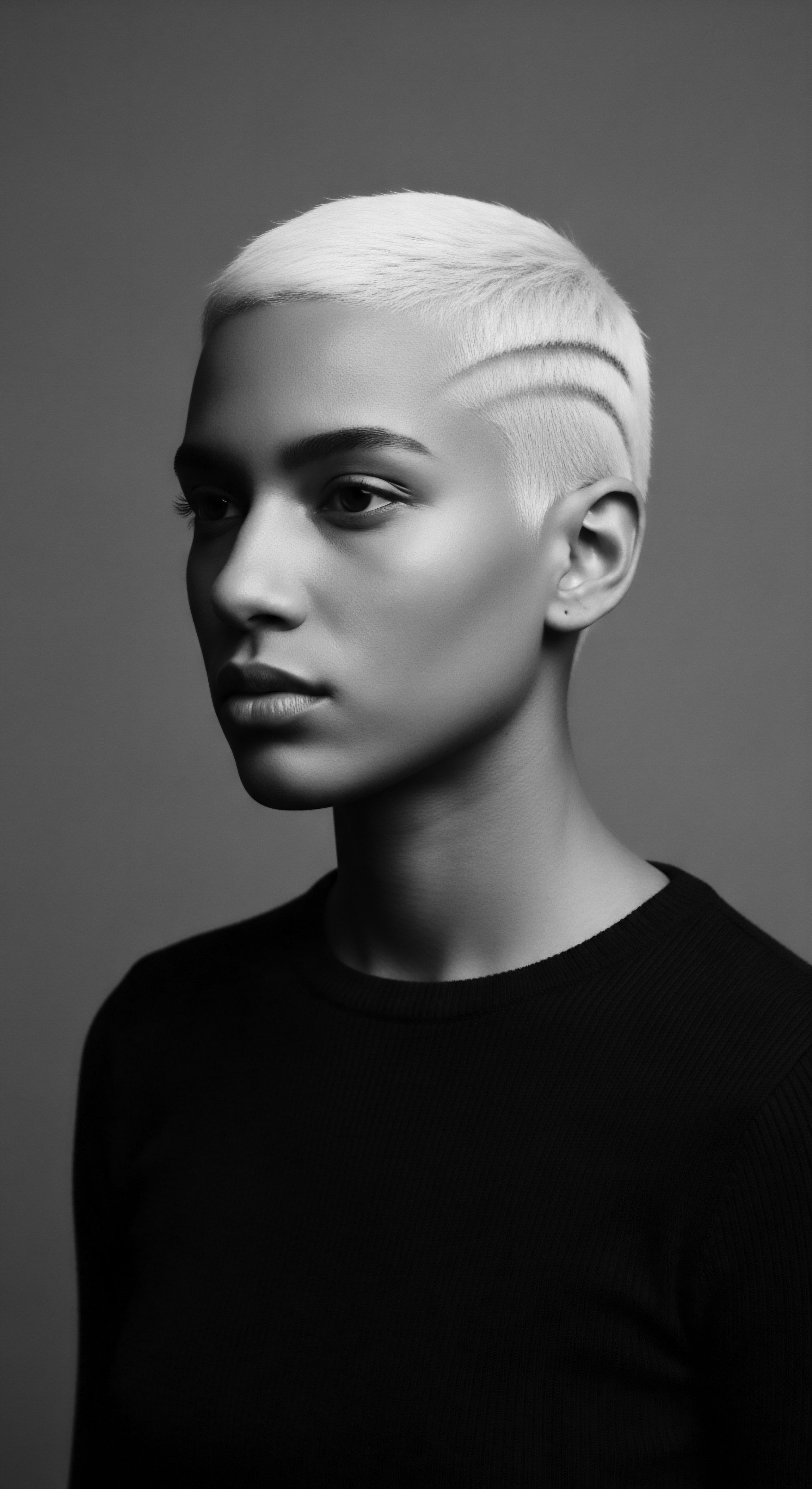
Melanin’s Ancient Pact with Sunlight
Central to how textured hair’s natural architecture contributes to sun defense is melanin. This biological pigment, a gift from our deep past, determines the color of our skin, eyes, and hair. In hair, melanin is primarily found in the cortex, the shaft’s middle layer.
There are two main types of melanin in human hair ❉ Eumelanin, which produces brown to black tones, and Pheomelanin, which gives red and yellow hues. Darker hair contains higher concentrations of eumelanin, a powerful absorber of UV radiation.
This absorption capacity is a cornerstone of hair’s photoprotective function. When UV rays encounter melanin, particularly eumelanin, the energy is absorbed and converted into heat, which then dissipates harmlessly. This process prevents the UV radiation from penetrating deeper and causing damage to the hair’s protein structure, specifically keratin, and also protects the underlying scalp cells. It is a quiet, continuous act of protection, an ancestral pact with the sun forged in the crucible of adaptation.
- Eumelanin ❉ Abundant in darker hair, this pigment excels at absorbing and dissipating UV radiation, a primary shield.
- Pheomelanin ❉ Present in lighter hair, this pigment offers less UV protection and can even be photo-unstable, indicating a differing ancestral adaptation to solar exposure.
- Melanosomes ❉ These specialized organelles store melanin within the hair shaft, their quantity directly influencing the hair’s ability to absorb light energy.

The Curvature’s Unseen Strength
The very curl pattern of textured hair—from loose waves to tight coils—is more than an aesthetic preference; it is a structural advantage in the battle against solar exposure. The helical, coiled nature of the strands results in hair that does not lie flat against the scalp, but rather creates volume and height. This three-dimensional arrangement yields a denser appearance and, crucially, a physical barrier.
A quantitative study showed that hair provides a barrier against both UVB and UVA radiation, with this protection significantly enhanced by hair density and thickness, alongside melanin content. The overlapping nature of tightly coiled strands reduces the direct path for UV rays to reach the scalp. Think of it as a natural, microscopic mesh, where each coil works in concert with its neighbors to scatter and deflect light.
This collective action provides a physical filter, diminishing the intensity of radiation that reaches the sensitive skin of the head. It truly is a remarkable feat of natural design, rooted in a heritage of survival.
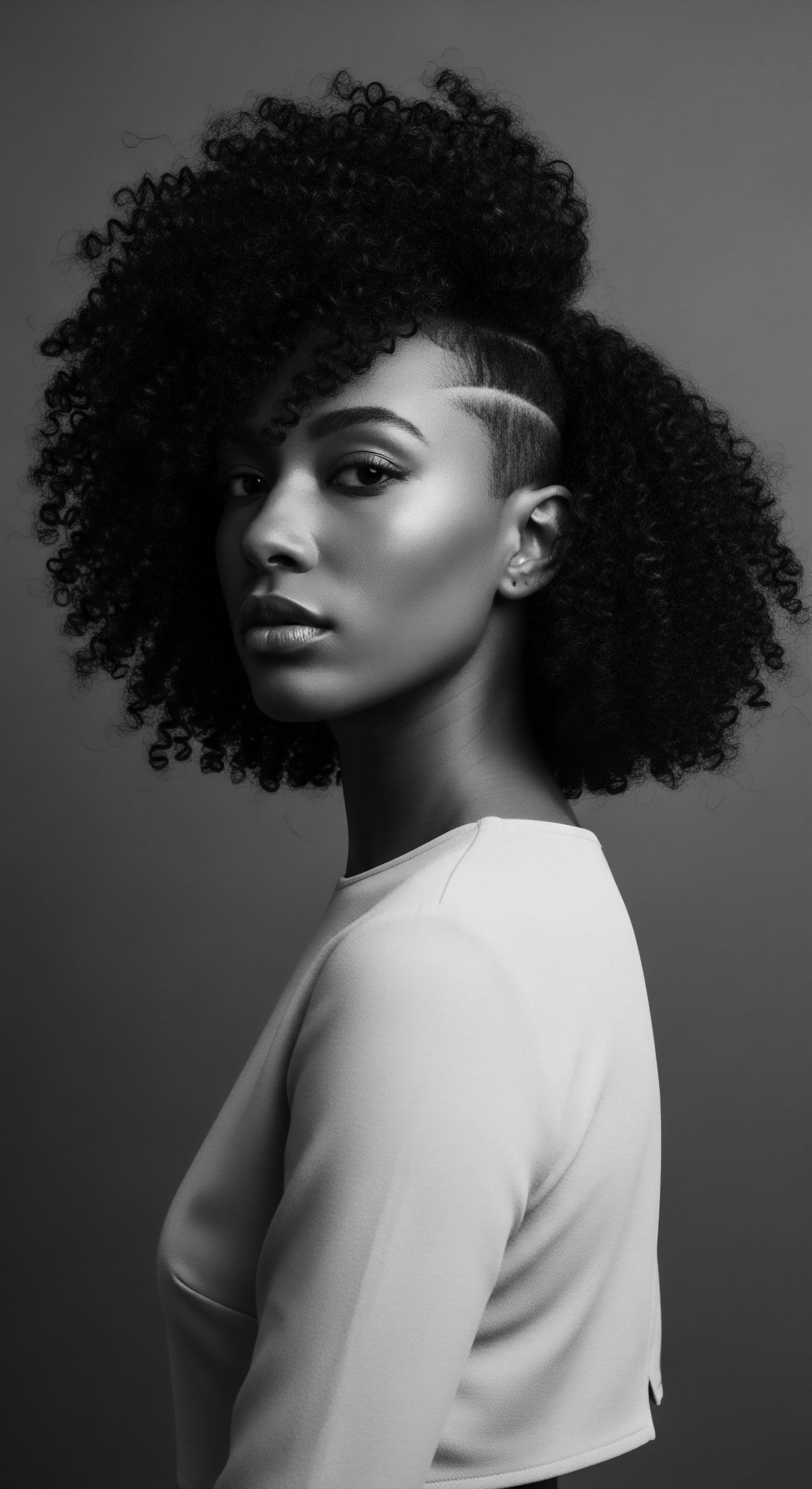
Ritual
The wisdom of how textured hair’s natural architecture contributes to sun defense extends beyond mere biology; it is intertwined with centuries of care rituals, ancestral styling practices, and the profound relationship communities have held with their hair. These traditions were not simply about aesthetics; they were acts of preservation, health, and cultural identity. The art of textured hair styling, passed down through generations, often enhanced the hair’s innate protective qualities, creating a living dialogue between the natural architecture and human ingenuity. Understanding these rituals provides a richer context for how our hair has always been, and continues to be, a bastion against environmental elements.

Protective Styles’ Ancestral Legacy of Coverage?
Across the African diaspora and indigenous communities worldwide, protective styling is a cherished legacy. Styles such as braids, cornrows, twists, and bantu knots were not born of caprice; they arose from a deep understanding of hair’s needs and the environmental realities of life under the sun. When considering how textured hair’s natural architecture contributes to sun defense, these styles amplify that natural capability. By gathering sections of hair into compact, intertwined forms, they create a more substantial physical barrier over the scalp and hair shafts.
Historical accounts and anthropological studies indicate that these styles served practical purposes, including shielding the hair from dust, wind, and the relentless sun. In West Africa, for example, elaborate hair designs dating back centuries spoke not only of social status but also of care and protection, often incorporating natural butters and herbs to aid moisture retention. The denser the style, the more effective the shield, particularly for parts and edges most vulnerable to direct sun exposure. This intentional manipulation of hair’s natural architecture became an external layer of defense, building upon the intrinsic protection already present.
An intriguing example of ancestral foresight concerning sun protection comes from the Himba tribe in Namibia. Their distinctive practice involves coating their hair and skin with Otjize, a paste made of red ochre clay, butter, and fat. This practice, observed for centuries, effectively functions as a natural sunblock.
While not directly altering hair’s internal architecture, it highlights how ancestral communities intuitively understood the need for external protection against the sun, even when hair offered its own defense. It is a powerful example of how communal knowledge, born of necessity and passed through time, supplemented natural capabilities.
Ancestral styling methods, like intricate braids and twists, extended the inherent sun protection offered by textured hair’s unique structure.
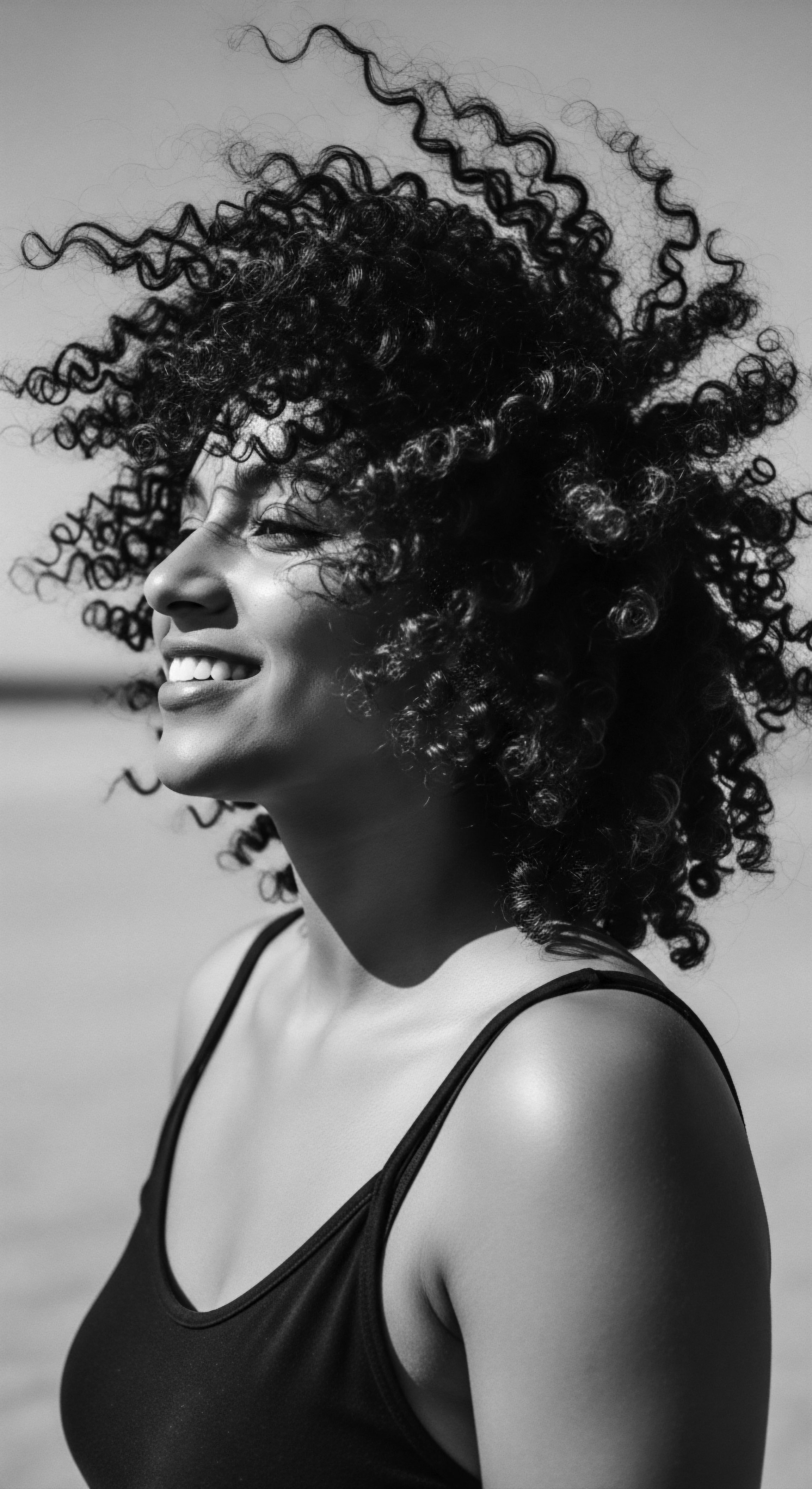
Headwraps and Coverings ❉ A Layer of Heritage?
Beyond styling, the practice of adorning and covering the head with textiles holds a significant place in the heritage of many Black and mixed-race communities. Headwraps, known by names like ‘Dukus’ in Ghana or ‘Geles’ in Nigeria, have a rich cultural and spiritual history. While they communicated social status, religious devotion, or cultural belonging, they also served an eminently practical purpose ❉ protecting against harsh sun, dust, and wind.
When posed with the query of how textured hair’s natural architecture contributes to sun defense, it becomes apparent that head coverings provided an additional, adaptable layer. This external barrier allowed for extended periods outdoors, whether for agricultural work, market activities, or simply daily life under intense sun. During the transatlantic slave trade, enslaved people in the Americas frequently wore headwraps on plantations, providing crucial protection from the sun, sweat, and lice during arduous labor.
Later, these coverings became symbols of resistance and dignity in the face of oppression. The combination of hair’s innate density and an added textile layer created a formidable defense system, a testament to the resourcefulness and ancestral wisdom of those who navigated challenging environments.

A Legacy of Adaptability
The ingenuity of ancestral communities in adapting their hair practices to their environments is profound. They understood, perhaps not through scientific equations but through generations of lived experience, the subtle interplay of hair density, coiling, and external coverings in providing sun defense. This knowledge was communal, experiential, and deeply embedded in daily life.
The transition of hair practices from Africa to the diaspora, adapting to new climates and social conditions, underscores this adaptability. Even when access to traditional ingredients or tools was limited, the core principles of care and protection, often involving covering the hair, persisted.
This historical use of head coverings, along with the very architecture of textured hair, provided a living shield. Consider the sun protection factor (SPF) concept; while hair doesn’t have an SPF rating like skin, its density, thickness, and melanin content all contribute to a protective effect against UV radiation. The addition of head coverings merely enhanced this natural predisposition, offering another stratum of defense against photodamage. It’s a holistic approach to wellbeing, where the body’s natural attributes are honored and augmented by cultural practices.
| Aspect Direct Hair Protection |
| Ancestral Practices (Heritage) Reliance on high eumelanin content and dense coiling. Use of natural oils and butters for conditioning. |
| Modern Understanding (How Does Textured Hair's Natural Architecture Contribute to Sun Defense?) Scientific validation of melanin's UV absorption. Recognition of hair density's role in physical shielding. |
| Aspect Scalp Coverage |
| Ancestral Practices (Heritage) Intricate protective styles (braids, twists) creating physical barriers. Ubiquitous use of headwraps for full coverage. |
| Modern Understanding (How Does Textured Hair's Natural Architecture Contribute to Sun Defense?) Understanding that protective styles minimize scalp exposure. Acknowledgement of head coverings as primary barriers for scalp health. |
| Aspect Ingredient Use |
| Ancestral Practices (Heritage) Shea butter, red ochre, various plant oils used for conditioning and physical barrier. |
| Modern Understanding (How Does Textured Hair's Natural Architecture Contribute to Sun Defense?) Research into natural ingredients for UV-filtering properties. Development of specific UV hair care products to supplement natural defenses. |
| Aspect The continuity of protecting hair and scalp from the sun reveals a timeless wisdom, where heritage informs contemporary practices. |

Relay
The journey of understanding how textured hair’s natural architecture contributes to sun defense is a continuous relay, a passing of knowledge from ancient wisdom to contemporary science. It is a nuanced conversation, acknowledging the profound insights held by our ancestors while enriching them with modern analytical tools. This advanced exploration delves into the intricate mechanisms by which textured hair, steeped in its heritage, operates as a biological shield and how contemporary practices can align with, and expand upon, this inherited strength. We move beyond surface-level observations to consider the deeper scientific underpinnings and their implications for holistic care.
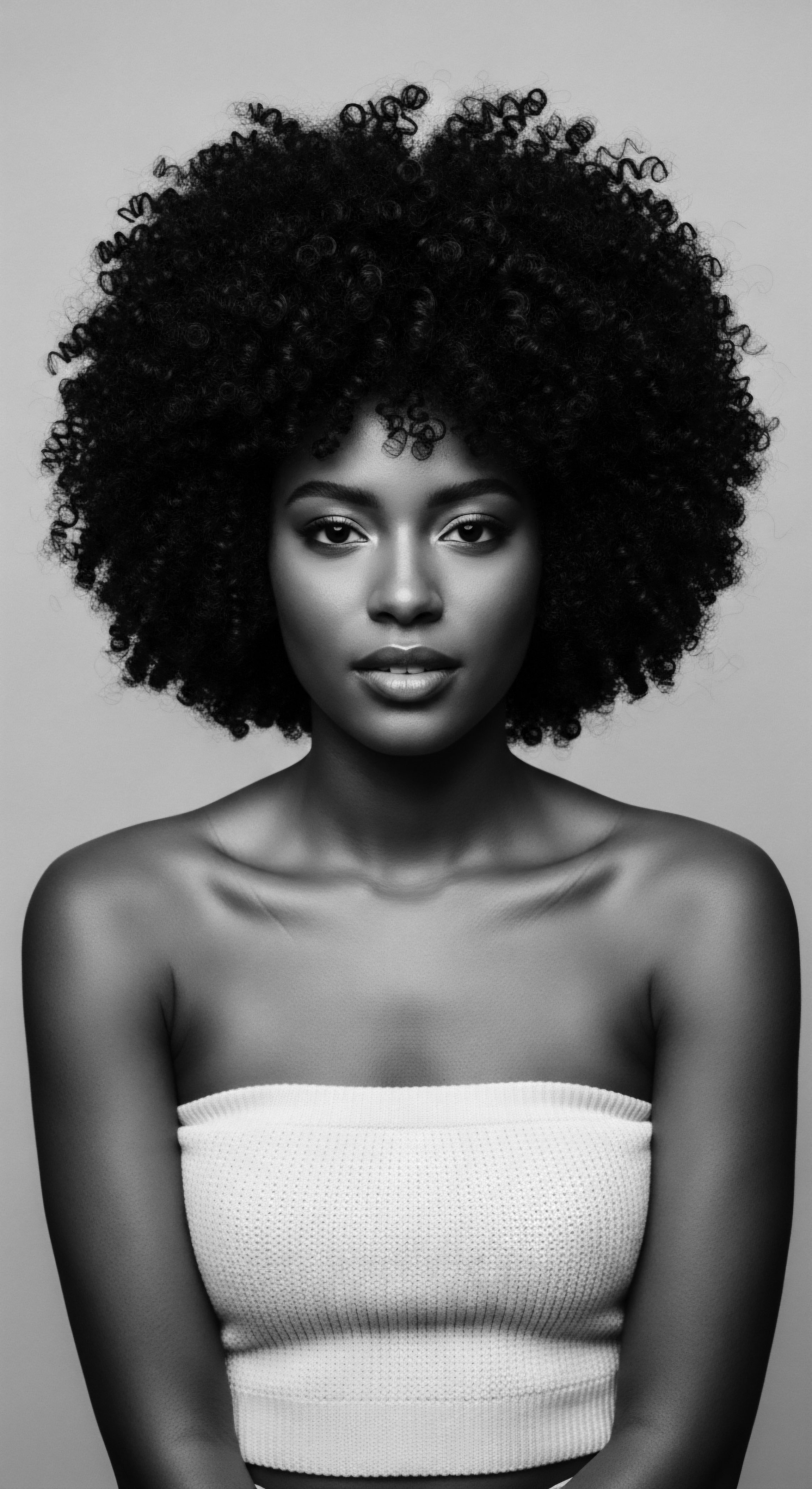
How Does Melanin’s Quantity and Distribution Influence Hair’s UV Protection?
The protective capacity of textured hair, especially against ultraviolet radiation, is undeniably linked to the type, quantity, and distribution of melanin within the hair shaft. Eumelanin, the dark pigment, possesses a broad UV-vis absorption band and radical scavenging action, making it a highly effective natural photoprotective agent. This means it can absorb UV rays and neutralize harmful free radicals generated by sun exposure, thus preserving the hair’s structural integrity and preventing damage to the keratin proteins that compose the hair shaft. Dark hair, rich in eumelanin, exhibits greater resistance to UV damage compared to lighter hair.
A study demonstrated that the ability of hair to absorb light energy is tied more to the quantity of Melanosomes (the organelles containing melanin) than solely the melanin content itself. This highlights the sophisticated packaging of melanin within the hair. Higher numbers of melanosomes mean more points of absorption and conversion of UV energy into heat, which then dissipates.
This internal, biochemical defense system is an innate advantage for individuals with hair rich in eumelanin, a characteristic often observed in populations of African descent who evolved in high-UV environments. The darker the hair, the more robust this natural, internal sunscreen, a testament to its deep ancestral roots.
While melanin provides a significant first line of defense, it is important to acknowledge its limitations. While dark skin, due to its higher melanin content, has an estimated intrinsic sun-protection factor (SPF) of up to 13.4, hair’s protection can vary. The scalp, despite hair’s shielding, can still be vulnerable, especially along parts or areas with lower hair density. This underscores the historical necessity of supplementary protective measures, such as head coverings, even among those with highly protective hair.
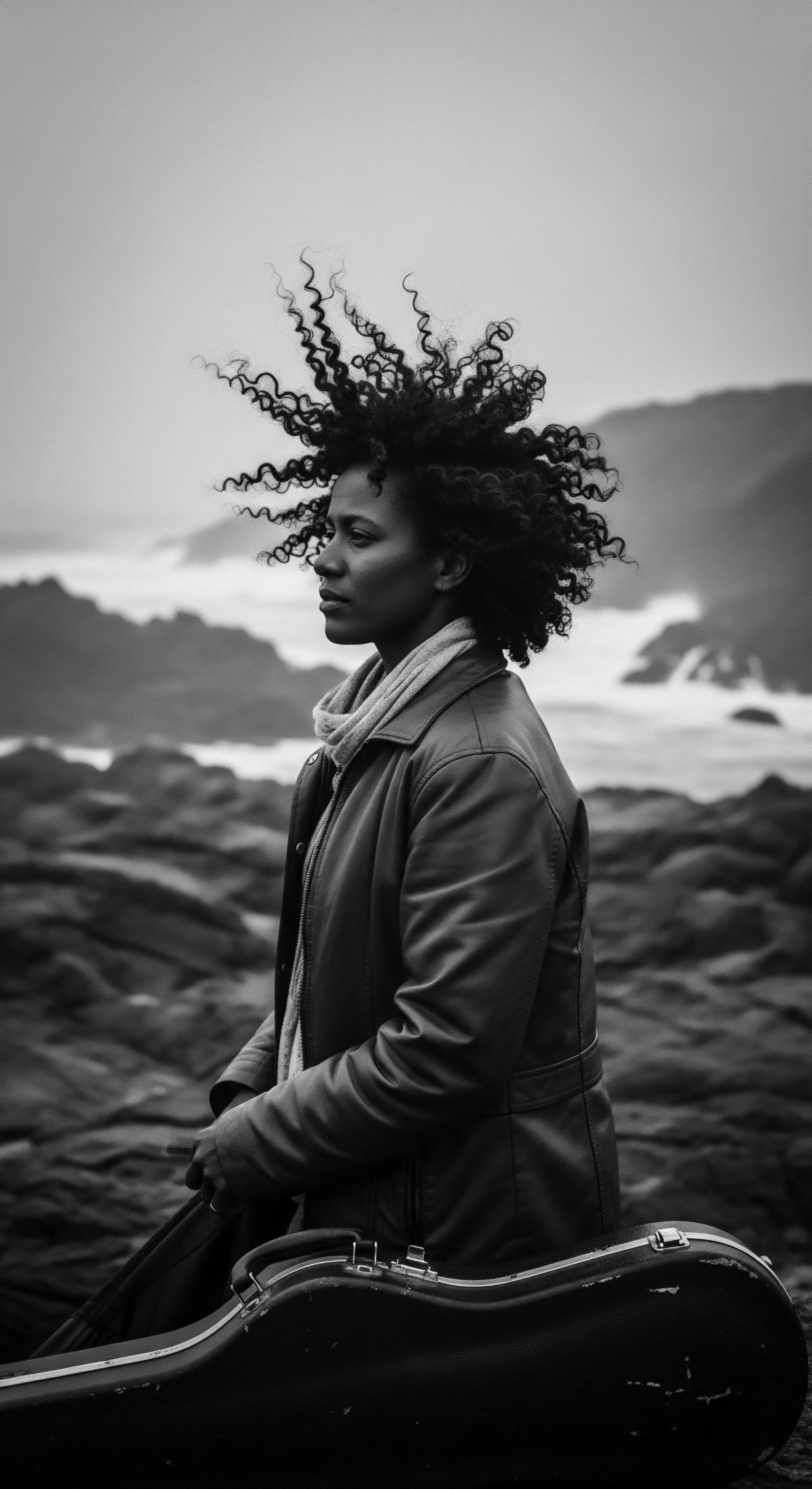
What Role Does Hair Density and Morphology Play in Sun Shielding?
Beyond melanin, the macroscopic and microscopic architecture of textured hair contributes significantly to sun defense. The sheer density of individual strands, particularly when hair is tightly coiled, creates a physical impediment to UV light. Picture a dense forest ❉ light struggles to reach the forest floor.
Similarly, the myriad strands of textured hair form a complex, three-dimensional barrier. Research indicates that hair density and thickness increase the level of protection offered against both UVA and UVB radiation.
The unique helical shape of highly coiled hair types, rather than lying flat against the scalp, stands away from it. This creates an air gap between the hair mass and the skin. This air layer provides insulation, mitigating heat gain from the sun, thereby preventing the scalp from overheating. It is a remarkable passive cooling system, reducing the need for excessive sweating to regulate scalp temperature.
This adaptation is particularly salient for ancestral populations residing in intensely hot, sunny climates. The very spring and resilience of a coil offer not just visual appeal, but a functional shield against the elements, a heritage of thermal regulation and solar protection.
Consider the cuticle, the outermost protective layer of the hair shaft, which consists of overlapping cells. While afro-textured hair may have fewer cuticle layers than Asian hair, it still performs the vital function of protecting the inner protein structures. UV exposure can degrade hair proteins, particularly keratin, and cause color changes.
However, the dense, multi-directional nature of coils, combined with melanin’s absorption, helps to diffuse and scatter incoming UV radiation before it can cause widespread damage to these delicate cuticular layers. This diffusion effect minimizes direct, concentrated exposure to any single point on the hair shaft or scalp.
- Density ❉ A higher concentration of strands creates a more complete physical barrier against direct UV penetration to the scalp.
- Coil Pattern ❉ The unique spring and lift of coils create an insulating air pocket, aiding in thermal regulation and UV diffusion.
- Cuticular Integrity ❉ While UV can damage cuticles, the overall architectural shield helps reduce the intensity of radiation reaching and degrading these protective outer layers.

Historical Insights and Their Scientific Echoes
The ancestral knowledge of textured hair’s protective qualities, though not articulated in modern scientific terms, aligns remarkably with contemporary findings. Communities across Africa and the diaspora understood the relationship between sun and hair through direct experience. Their solutions—be they specific styling practices or the application of natural substances—were refined over millennia.
For instance, the traditional use of shea butter in West Africa not only moisturized hair but also provided a physical barrier against environmental harm, including sun exposure. Similarly, aloe vera was used by Native American tribes to condition hair and protect it from harsh weather conditions, including sun damage.
These practices represent a sophisticated understanding of hair wellness, passed down as intergenerational wisdom . The relay of this knowledge continues as modern science validates and quantifies what ancestors inherently knew ❉ textured hair is a marvel of natural protection, and its care rituals are deeply rooted in this defensive capability. The connection between the biological architecture and these ancient practices is not coincidental; it is a profound testament to the holistic approach to living that characterized many traditional societies.
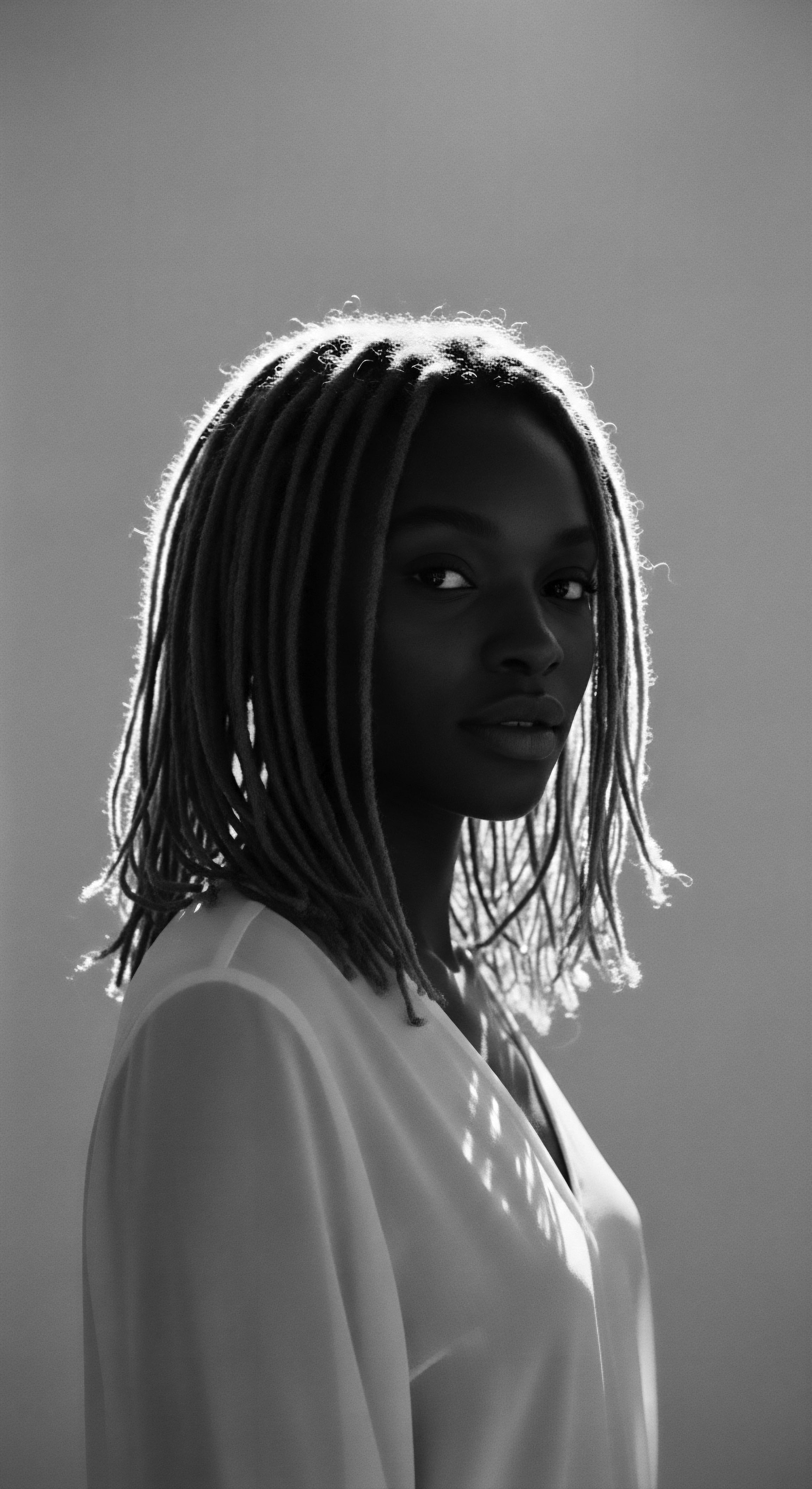
Reflection
To consider textured hair is to gaze upon a living scroll, unrolling through time, each curl a testament to resilience, each coil a repository of ancestral knowledge. How does textured hair’s natural architecture contribute to sun defense? It offers an answer that echoes from savannahs to modern cityscapes ❉ a sophisticated, inherent shield, gifted through generations.
This protection is not a mere scientific footnote; it stands as a central pillar of its being, profoundly interwoven with the enduring spirit of our lineage. It reminds us that beauty, heritage, and well-being are never separate concepts.
The coiled pathways of these strands, imbued with rich melanin, represent an ancient wisdom, a testament to adaptability in the face of nature’s fiercest elements. Our hair is a conversation across millennia, a dialogue between biology and the human spirit, continuously shaping identity and guiding our path forward. We recognize its value, not just in its protective qualities, but in its profound symbolism of strength, continuity, and self-acceptance, a legacy truly unbound.
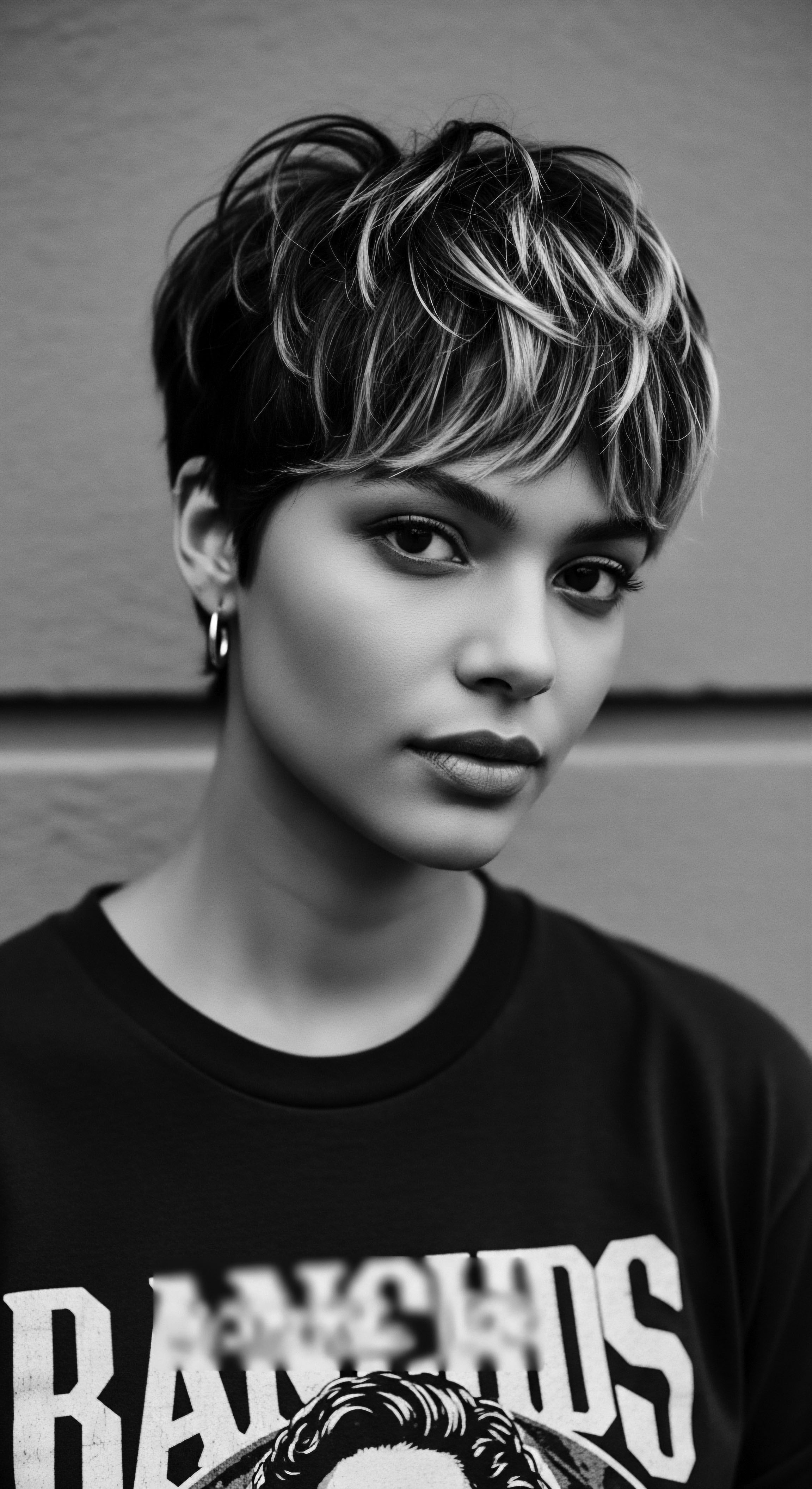
References
- Caffrey, C. (2023). Afro-textured hair. EBSCO Research Starters.
- Cleveland Clinic. (2022). Melanin ❉ What Is It, Types & Benefits.
- Čajavec, J. (2012). UV damage of the Hair. . ResearchGate.
- Vekilov, P. G. et al. (2015). Amount of Melanin Granules in Human Hair Defines the Absorption and Conversion to Heat of Light Energy in the Visible Spectrum. PubMed Central.
- de Galvez, M. V. et al. (2015). Human Hair as a Natural Sun Protection Agent ❉ A Quantitative Study. ResearchGate.
- Centre Clauderer. (n.d.). Melanin ❉ How does it affect hair?
- de Galvez, M. V. et al. (2015). Human Hair as a Natural Sun Protection Agent ❉ A Quantitative Study. PubMed.
- Conner, P. (2024). Hair Care Secrets of the Past ❉ What Our Ancestors Used for Healthy Hair.
- Mishra, R. K. & Gill, R. K. (2010). MC1R, Eumelanin and Pheomelanin ❉ their role in determining the susceptibility to skin cancer. PubMed Central.
- ICT News. (n.d.). 5 Reasons Natives Have Lustrous Locks ❉ Ancient, Indigenous Hair Remedies.
- Popescu, C. & Popescu, R. I. (2007). UV Damage of the Hair.
- Soroka, S. (2024). Hair Pigmentation Chemistry. The Trichological Society.
- Afrostreet. (2025). The Cultural Significance of Headwraps & How to Wear Them ❉ Embracing Heritage and Style.
- 22 Ayur. (n.d.). The Ancient Natural Ways of Hair Care Across Continents.
- Wang, X. et al. (2018). Effect of hair removal on solar UV transmission into skin and implications for melanoma skin cancer development. Optics Letters.
- Fagan, C. (2022). Is Hair Sunscreen a Thing? What the Experts Say. Healthline.
- Serrano, A. et al. (2017). 3D Modelling for Solar Erythemal UV Protection Provided by Human Hair. MDPI.
- Primally Pure Skincare. (n.d.). Reviving Ancestral Wisdom ❉ Transform Your Life Through Holistic Living.
- Morrocco Method. (2015). How Your Ancestors Washed Their Hair. YouTube.
- Ferrara, A. et al. (2024). Melanin for Photoprotection and Hair Coloration in the Emerging Era of Nanocosmetics. MDPI.
- Chokshi, J. N. et al. (2022). Exploring the Use of Natural Ingredients for the Protection of Textured Hair from Ultraviolet Radiation ❉ An In Vitro Study. MDPI.
- Esme Luxury. (2024). Silk Hair Wraps in Different Cultures ❉ A Global Perspective.
- JD Institute of Fashion Technology. (2021). HEADWRAPS ❉ HISTORY AND EVOLUTION.
- Black Afro Hair. (2013). THE SCIENCE OF HAIR – PART ONE (The Basics).
- Obé Headwear. (2024). Significance of headwraps.
- Norval, M. & Wondimu, K. S. (2017). The Epidemiology of Cutaneous Melanoma in the White and Black African Population Groups in South Africa. NCBI.
- Robbins, P. E. (2012). Kinky hair. Wikipedia.
- Quora. (2022). What is the evolutionary reason for why sub-Saharan African people (black people) have such tightly coiled hair that is so distinctly different from the hair of other racial groups?
- LearnSkin. (2020). Photo Protection for Hair – Protect Your Hair From UV Sunlight.
- Rusek, A. et al. (2019). Assessment of the photoprotection properties of hair cosmetics using the hemispherical directional reflectance method. PMC.
- Science Forums. (2008). Evolution of “Afro hair”.
- The Wrap Life. (2022). A Beautiful Record of How Modern Headwraps.
- Jablonski, N. G. & Chaplin, G. (2014). The Evolution of Skin Pigmentation and Hair Texture in People of African Ancestry.
- Davis-Sivasothy, A. (2024). The Science Of Black Hair Summary PDF. Bookey.
- Obeid, R. et al. (2023). Are People of Color at Risk for Skin Cancer?
- Saraiya, M. (2019). Melanoma Among Non-Hispanic Black Americans. CDC.
- Chowdhary, S. et al. (2025). Historical Perspectives on Hair Care and Common Styling Practices in Black Women.
- Goddard, N. (2020). Melanin for Hair ❉ What Role It Plays & How to Increase Production. Healthline.
- Alexis, A. F. (2013). Skin Cancer in Skin of Color ❉ An Update on Current Facts, Trends, and Misconceptions. PMC.
- Dr.UGro Gashee. (2020). Red Ochre as a Skin and Hair Sunblock an Old Himba Discovery.
- Pan, M. H. et al. (2011). The Ethnic Differences of the Damage of Hair and Integral Hair Lipid after Ultra Violet Radiation. PubMed Central.
- Jabbour, H. & Khan, H. (2019). Hair Damage From Sunlight Radiation Characterized Using Atomic Force Microscopy.
- Black Skin Directory. (2023). Sun, Sea and Afro Hair.
- MaGéAu Naturel. (2025). Truth About Sunlight ❉ Does It Really Lighten Hair Without Damage? A Natural Hair Care Product Perspective.
